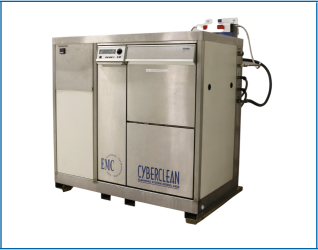PCB Cleaning for Effective Coating Process
Blog
December 7, 2022
Benefits of PCB Cleanliness
One of the first and vital steps of the ECT coating process is cleaning the PCB to remove contaminants and promote coating adhesion, and in turn efficacy and lifespan reliability of electronic systems devoid of harmful contaminants also collected during the manufacturing process. Some aftereffects of common PCB negligence are slower operating systems, overheating, corrosion, and malfunction. Cleaning standards, as established by IPC, states acceptable levels of ionic contamination originally set for military manufacturing in the 1970s and 1980s. Which cleaning method is used is dependent on the type of contaminants, board type, and tools available. Some of the options from ECT are listed below:
| 99% Isopropanol Wash | ||
 | IPA (Isopropanol) is used to dissolve a wide range of polar and non-polar soils. IPA is efficient in the removal of light oils, fingerprints, cutting fluids, flux residues, carbon deposits and mold release. This method is used for high volume batches due to quick evaporation. Another benefit from this method is that it is less prone to leaving traces of oils upon evaporation of the solvent. | |
| Aqueous Batch Cleaner & DI Rinse | ||
 | Aquanox A4625B Chemistry is specifically designed for optimum effectiveness in batch washers. This product will remove all types of electronic flux residues that may still be present on the board after the assembly process. This chemistry is specifically used for the cleaning of ionic contaminants left by the use of organic and acid fluxes. This dishwasher method requires vertical loads, electronic safe chemistry for cleaning and drying accomplished in timer-controlled cycles. | |
| Atmospheric Plasma Cleaning | ||
 | Atmospheric plasma cleaning is the process of using a neutrally charged nozzle for use on wide range of electronic substrates. This system is reliant only on air and high voltage for operation. The surface activation that the plasma produces results in a distinct increase in surface energy by almost 72 dynes for an optimal bond between substrate and chemistry applied. | |
